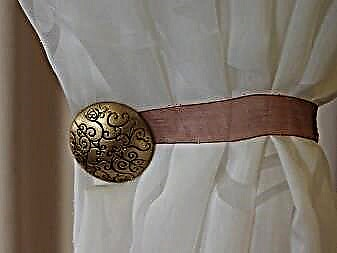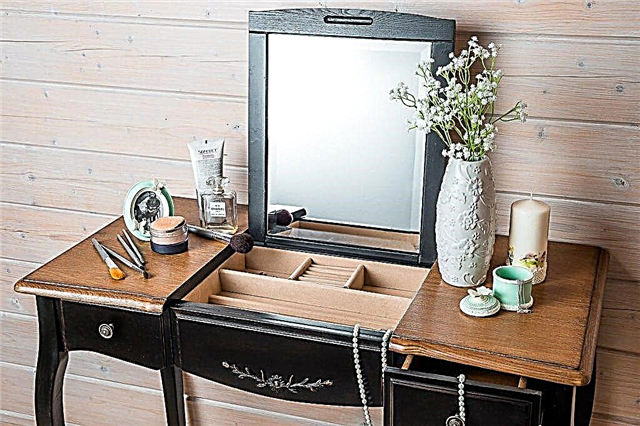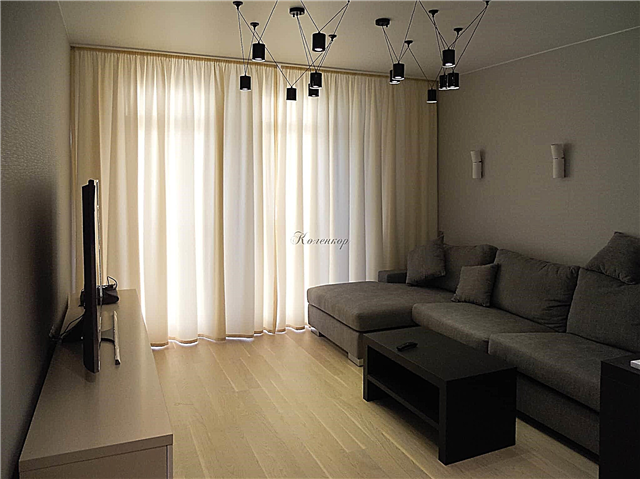
For a long time, gypsum putty was considered the most popular material for finishing, but technology does not stand still, the construction market is replenished with more and more new products, among which is latex putty, work with which does not cause difficulties even for beginners.
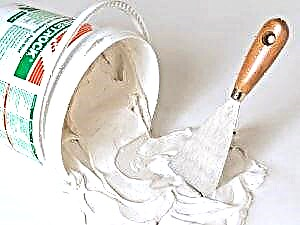
What you need to know about the material
Initially, putty is a building material intended for the correction of various surface flaws. Performing construction work without its use is not recommended.
The composition of the mixture on a latex basis consists of:
- binder (latex),
- filler
- antiseptics
- hardening regulator
- plasticizer
- water.
For internal work, it is better to purchase a putty containing an antiseptic in the composition. It reliably protects surfaces from fungus and mold.

Scope of use
This type of finishing material is applied after laying the main leveling layers. The use of latex putty has a wide range. Its description may take a lot of time, but in particular it is used for:
- filling seams (for example, in sheets of drywall),
- elimination of small (up to 5 mm) coating defects,
- giving different surfaces a relief structure,
- pouring cracks in concrete, plaster and other types of materials,
- processing niches and corners.
Note! Latex putties are categorically not suitable for use on metal surfaces.

On the video: how to choose a putty.
Advantages and disadvantages
Like any material, latex putty has its pros and cons. Fortunately, for the consumer, she has much more advantages. So, putty made of latex:
- has the smallest shrinkage, bubbles and cracks will not form on the surface,
- presented in a wide range of colors,
- easy to apply and does not crumble,
- the dried composition is not afraid of sudden changes in temperature,
- sold in finished form in different packaging options,
- firmly adheres to the treated surface.
Of the minuses, there are only 2 points. Firstly, latex putty categorically does not tolerate cold weather. Frozen material, if its resistance to low temperatures is not indicated on the package, loses all its properties and its further use becomes impossible. Secondly, such a putty is not cheap, but even despite its high cost, it remains one of the most popular mixes for finishing.
Important! It’s worth acquiring goods only in those stores that you trust, and in the case of the purchase of a spoiled composition it should be possible to return low-quality goods back.

Specifications
Naturally, the putty of different manufacturers is characterized by different technical characteristics, but among them typical ones can be distinguished. For example:
- The consumption of the mixture. Usually on a wall covering with a layer of 1 mm per 1 sq. a meter requires 0.9-2.3 kg of the composition. Also, the type of material and surface condition for processing affect the total consumption of the mixture.
- Time to freeze. The optimum temperature for applying the mixture is 20C. In such conditions, 1 layer will take about 3-4 hours to dry. Remember, if you need to subsequently paint or prime the surface, the putty layer must be kept for a day.
- The thickness of one layer. Varies from 0.5 to 3 mm.
- Storage Recommendations. The product must be in tightly closed factory containers.
- Shelf life. The average shelf life of putty is 1-2 years.
- Tara. The finished product is marketed in plastic containers weighing from 1 to 30 kg.
- Environmental friendliness. The latex mixture is not toxic.

Review of the best firms
- Vetonit (Vetonit) produces an average quality putty, which is easy to work with. Please note that if in the future you will need to shoot old wallpapers, they will be removed only with a layer of putty.

- Tex putty is also a decent option. This manufacturer offers quality latex material - putty latex pro. And since mixtures with latex are usually not frost-resistant, Tex has developed a frost-resistant mixture especially for the cold season, which transfers the short-term freeze / thaw cycle up to 5 times. Unfortunately, mixtures of this brand are sometimes faked, so you should pay attention to the store where you are going to purchase this product.

- Lacra mixes contain additives that protect the treated surface from fungi and mold. Also, mixtures of this company can withstand up to 3 freeze / thaw cycles. They are well sanded even after drying.

- It is better not to buy Knauf products for non-professionals: their putty mixture is applied only with a thin layer and errors are not allowed when working with it. Good to use as a top coat.

- Caparol fillings perfectly adhere to the surface, making it perfectly smooth and even. They have a small expense and low cost in comparison with competitors.
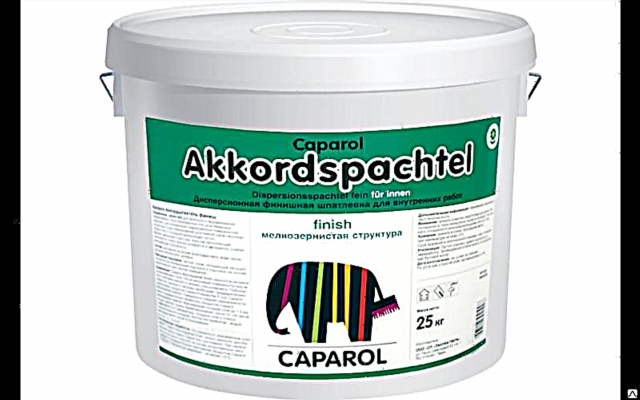
- The product of the manufacturer Shitrok (Sheetrock) allows you to get a perfectly smooth surface without visible flaws. It is used as a putty for painting and to create a decorative embossed surface. Shitrok mixtures can withstand up to 10 freeze / thaw cycles.

Do not know which filler mixture to choose for a wooden surface? Wood latex putty is a good option, it is very easy to work with.

Precautionary measures
- Latex putty is not toxic, but still do not allow its prolonged contact with unprotected skin. No one is immune from individual intolerance. In case of an allergic reaction, the affected area should be immediately rinsed thoroughly with plenty of water.
- Do not forget to regularly ventilate the room in which the work is carried out. Vapors from drying putty can cause respiratory irritation.
- The unused putty remaining after repair work is strictly forbidden to be drained into the sewer or natural reservoirs.
Repair Preparation
Of the tools you need:
- a set of 2 spatulas of different widths,
- grater with a foam layer,
- corner spatula,
- roller
- brush,
- water dispersion primer
- serpentine tape.

Stages of work
The technology for working with latex putty is very similar to working with other putty materials, with the exception of several technological nuances. For example, before use, the container with the mixture must be kept at room temperature for some time (especially true in the cold season). The main stages of work:
1. Before applying the putty mixture, it is necessary to measure the surface area to be treated and determine the desired thickness of application. Based on these two data, the desired amount of putty is calculated. It is recommended to purchase a mixture with a volume of 20% more than necessary. Typically, manufacturers indicate the consumption of the composition on the container, but in case of its absence, you can ask these data from the seller-consultant.

2. Be sure to clean the wall or other work surface from dirt and accumulated dust. If the surface has been previously painted, brittle layers of whitewash or old paint should be removed.

3. The solution should be prepared. The procedure for divorcing the latex mixture is very similar to the procedure for separating ordinary putty: water is added to the container with the mixture in a 1: 1 ratio, then the contents are constantly stirred until a homogeneous consistency is obtained. When breeding, remember that the finished mixture will harden in an hour. The resulting amount of putty will need to be consumed during this time.

4. Glossy surfaces should be sanded to a matte finish. A surface affected by fungus or mold must be treated with special compounds.

5. After cleaning, apply a water-dispersion primer to the surface. This is necessary to strengthen the surface, clean it from dust and give even absorbency.

6. Before applying putty, it is necessary to allow the primer to dry well. Do not allow dust to settle on it.
7. It is necessary to repair all existing joints, cracks and other defects. Glue a serpentine tape over the joints, and treat the area under it and around it with putty. Grind the dried joints and apply a primer with a thin spatula.

8. The last stage is grinding. In the case of latex putty, a wet foam sponge should be used. It will remove the remnants of the putty. Do not wait for the mixture to dry completely, since dried latex putty is difficult to grind.
Material characteristic
Before starting work, it is necessary to calculate the required amount of putty. On average, the consumption when applying a layer of 1 mm varies between 0.6–2 kg of the finished mixture per 1 m². The complete drying time of one layer at a temperature of 24 degrees is 24 hours. Application of the second coat is allowed no earlier than 12 hours. And the surface should be primed or painted no earlier than 24 hours..
Putty can be stored for up to two years. At the same time, it is worth careful to ensure that the plaster is not in a cold room, under direct rays, and also is far from heating appliances.
Using
Before the start of repair, the putty must be kept for a certain period at room temperature. Pre-finishing surface should be processed. It should be dry, cleaned, not have fragments of the old finish.
The next step is cooking the mixture. The process of divorcing latex putty is similar to the preparation of an ordinary cement mortar.
Pour some water into a container with a consistency and continuously mix with a mixer until a homogeneous consistency emerges.
Putty and liquid should correspond to equal shares (1: 1). Then the mixture should stand for about 2 minutes and then stir 1 time, if necessary, add water.
Accordingly, the latex mass, like other species, gives water quite rapidly, regardless of the primed plane. Faced suddenly with this kind of problem, when it is impossible to do a “stretch”, you need to resort to the following resolution of the situation.
It is necessary to soak a little gypsum with liquid and everything will return to normal. In addition, it is necessary to carry out such manipulation if the temperature is more than 30C.
The mixture is applied with a spatula in 1 or a number of layers. The next layer must be applied after the absolute drying of the previous layer.
How long it takes to putty dry depends on the country of manufacture and labeling. The indicated specifications are indicated on the product label. Most often, the drying time is from 2-6 hours, and the expenditure is from 0.5-2.5 kg / m².
Do not use sandpaper all the time. You can accidentally "dump" the excess or this grinding will bring a lot of difficulties. therefore use a moistened sponge to level itif the putty is not completely dry. Be careful not to spill excess liquid from the sponge.
Finishing putty - applying the final layer of the substance to the surface.
The starting putty differs from the final consistency with large particles. It can be applied in a thick layer to seal deep cracks.
Despite the thick layer, it does not burst, in contrast to the final one, which must be applied with a thin layer (1-2 mm) so that it does not crack.
Most common manufacturers of building materials have seen widespread and increased demand for products. Which one is better? Each company decided to take advantage of such popularity and create its own company for the production of latex putty.
Today there are a significant number of manufacturers of building materials, and this complicates the choice of material.
With this type, in cases of purchase not fake, specialists in the field of repair activity are satisfied.
She is does not burst, lays down very delicately, and when processing the surface of the products with sandpaper is not particularly difficult. The surface is equally smooth and uniform.
Vetonite
According to the characteristics has an average. But it’s easy to use in work, to breed easily, the speed of drying will be only a plus.
But in the case when you start gluing tapestries, difficulties may then arise, as you will be able to remove the old wallpaper together with putty. Often, moreover, she is capable of soak and pieces together with the wallpaper to fall behind the wall.
Knauf
More suitable for repair experts. In this regard, that it is more difficult to skin, it should be applied very carefully to make fewer mistakes.
After the next kneading, wash the container and appliances well. Putty is easy to use.
The highest quality putty is a compound from the German manufacturer “Knauf”. It is used by leading experts in the field of repair work and design. Its necessary apply very carefully for this reason, it is not recommended for beginners.
Sitrok
Soft to use, does not twist, is well polished. Only you need to buy from a manufacturer of a foreign manufacturer (for example, the USA) - others did not fit in quality.
In addition, it is possible to highlight the brand Shitrok (Sheetrock). If you decide to buy putty from this manufacturer, in this case you need to highlight, the fact that there are currently many fakes of putty consistencies of this manufacturer.
Caparol
It fits perfectly on the walls, so they seem perfectly straight and smooth. Relatively inexpensive in terms of cost and consumption with other options. For people who for the first time decided to start the repair, it is better to buy Kaparol latex putty.
It’s easy to work with her, and in addition she has a relatively low price.
You need to directly purchase building materials only at branded shopping centers or you can choose putty directly from the manufacturer.
On wood
- common color palette
- just applied and easy to grind,
- slight thermal shrinkage after drying,
- excellent adhesion.
Wood latex putty “Colorika Aqua”- environmentally friendly products, odorless:
- ready-to-use products
- does not require one or another high-class training,
- owns optimal grip (adhesion),
- dries up fast
- easy to apply, including vertical materials,
- has a slight shrinkage after drying,
- produced in different colors.
Hard putty for wood “Colorika Aqua” - is specialized in processing holes, closing cracks, as well as correcting imperfections in wood products designed to prepare the plane for further painting.
Latex putty is perfect for repair work in rooms with high humidity (kitchens, bathrooms).
The composition includes acrylic copolymers, fillers, additional additives and a chemically prepared liquid.
Specifications
Latex putty is quite popular among specialists due to its positive technological data. On sale there is a huge assortment of different colors for every taste. Latex putties have an advantage over acrylic.
Obtaining the latex composition of the desired tone eliminates unnecessary expenses for the purchase of specialized dyes. It’s quite comfortable to work with ready-made compositions due to their flexible consistency.
Also, latex putties have significant adhesion and work according to the principle of not thick rubber, perfectly leveling any surfaces, closely mating with them.
Facade warm plaster is a building mixture that contains binders and fillers in its composition. It's all about the warm plaster for the facade.
Currently, it is impossible to imagine decorating without the use of tile glue. Here is its composition.
Today, quarry sand is the most common material used in repair and construction. Follow the link to get acquainted with its characteristics.
When the latex putty hardens, a non-cracking and non-crumbling shell is formed, which has an advantage in contrast to the use of acrylic.
The disadvantage of latex-based formulations, as already stated, is the overpriced and intolerance to low temperatures. It is used to align planes from a variety of materials.
The main goal of this type of putty is to level the surface for the further finishing process. In most cases, latex putty is used for applying to mineral surfaces of walls, namely concrete, gypsum and plaster.
Latex putty has the following general characteristics:
- cover layer: from 0.5 up to 3 millimeters,
- consumption: due to the thickness of the cover from 0.5 to 2 kg / sq.m,
- absolute drying period: 24 minutes,
- drying period between layers: 12 hours,
- savings period: 1-2 years,
- storage requirement: in the original closed tank, not allowing freezing,
- conditions: at an atmosphere temperature of +5,
- packing: plastic container from 1 to 30 kilograms,
- not toxic.
For more information about latex putty, see the video:
Application Method
Before use, stir the putty to a pasty appearance (if necessary, dilute with water in an amount of not more than 10% of the volume of material).
Putty is applied to a plane cleaned from contamination with a rubber or iron spatula, with a layer of not more than 1.5 millimeters.
When filling the deepest cracks, putty is applied in several layers. Treat dried coatings with medium-grain sandpaper and clean the surface.
The plastered surface must be treated with the “Colorika Aqua” multi-purpose penetration primer.
- costs: total consumption depending on the lack of a plane of 200-500 g per m2,
- drying time: The drying time between the application of any coating at + 200 ° C is not more than 1 minute, the final drying time at + 200 ° C and a relative moisture percentage of 65% is 2 minutes,
- instrument cleaning: instruments immediately after use are simply cleaned with hot water using detergents,
- capacity in kg: 0.4 - 0.8 kilograms
- Shelf life of use: 1 year,
- Warranty - 12 months in a closed container.
“Color Aqua” is a long-term service, withstands reusable wet cleaning. The surfaces coated with paint are smooth, matte. To give the necessary shades, you can use both machine and manual tinting methods.
Conclusions
Latex putty has the following positive criteria. Professionals use latex putty only with a thin ball, because it does not always withstand a few millimeters of extra thickness. Plus, you can always save significantly.
A layer such as 3 mm would be just right. Observe only one caveat: when sealing joints or holes, its thickness should not exceed 1 mm.
A huge plus of latex putty is the compatibility of its use with a variety of decorative and paint materials. The putty is flexible, so no additional grinding is required. We recommend that you familiarize yourself with the material that will tell you how to properly "putty" or "putty."
Mixture preparation
To begin with, the container with the material must be left for some time at room temperature. The next step is to prepare the solution itself. To do this, add water to the tank with putty. All ingredients are taken in equal parts. Then the mass should be thoroughly mixed and allowed to settle for about two minutes. If necessary, if the solution is too thick, you can add a little more water.
Do not forget that the resulting solution will harden in an hour, so it is very important to prepare as much as will be used up to this point.
Advantages and disadvantages
Like every type of putty mixture, latex-based mortar has its advantages and disadvantages.
The advantages of this composition include the following properties and characteristics:
- The coating is characterized by minimal shrinkage.
- Some types of latex coating are resistant to temperature extremes. This property allows you to use the material not only for internal but also for external wall decoration.
- Resistance to precipitation.
- A wide range of different shades.
- High adhesion with various materials.
- Due to the viscous consistency, the solution easily penetrates and fills cracks on the surface.

- When dried, forms a high-strength coating.
- Good elasticity.
- Great as a base for painting. This coating does not absorb paint and varnish solutions, which allows to reduce paint consumption during finishing.
- Ease of construction work.
- The resulting coating is not covered by cracks and does not crumble.
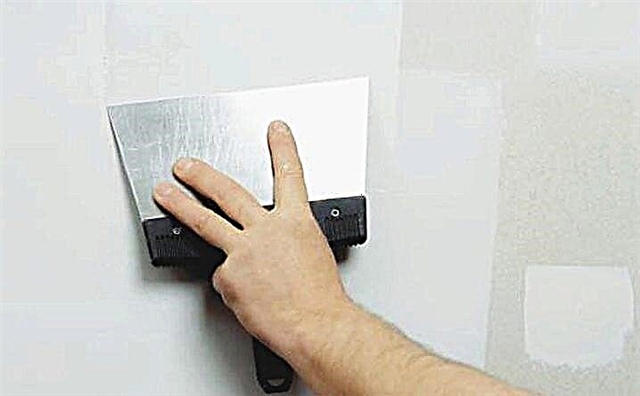
Despite the impressive advantages of latex putty, it also has its drawbacks.
Consider the main disadvantages of the material:
- The prepared solution must not be exposed to low temperatures. When freezing, the material loses some properties. Therefore, even if the solution is thawed, it will already be unsuitable for use.
- The price of such a coating exceeds the cost of many types of putty. However, this material can be applied with a thickness of one millimeter, unlike acrylic or cement putty, which can significantly reduce the consumption of the mixture.

Scope of application
Latex putty can be used both for exterior and interior construction work. The mixture has good adhesion to almost all materials. Metal surfaces in this case are an exception - they are not recommended to be puttied with latex mixtures.
Latex composition is well suited for the following materials:
- wood,
- drywall sheets,
- concrete,
- plastered surfaces
- brick walls.
The scope of latex material is not limited to leveling surfaces.
This mixture is used for the following purposes:
- the creation of a base for painting with alkyd enamel, oil compositions or aqueous dispersion solutions,
- plasterboard joints sealing,
- elimination of cracks and various defects on the surface,
- puttying of slopes of window openings,
- repair and restoration of wooden structures,
- the creation of various textures on the surface,
- Papier-mâché trim.

Manufacturers
Before buying a latex putty, you should pay attention not only to the composition and characteristics of the mixture, but also to the manufacturer. To purchase quality material, you must first familiarize yourself with manufacturers who are well established in the market for decorative coatings and study reviews on their products.

The Tex company is one of the largest Russian manufacturers of building materials. The company offers high-quality products at affordable prices, including latex putties. Latex-based mixtures are available in two versions:
Putty "Tex Profi" is intended for interior decoration of walls and ceilings with the aim of leveling before applying the finish coating. The material is suitable for application on concrete, plastered walls, fiberboard and gypsum plasterboards.. Available in white with cream or gray shades. The mixture is sold ready to be applied in containers in a small volume (1.5 kg, 5 kg, 8 kg) and in large buckets weighing 16 and 30 kg.


Mixture "Universal" is also intended for finishing work indoors. The solution is applied to the surface before painting or wallpapering. The Versatile plaster differs in high speed of drying. Drying time under favorable temperature conditions is four hours. The mixture can be applied to the surface with a thickness of one millimeter.
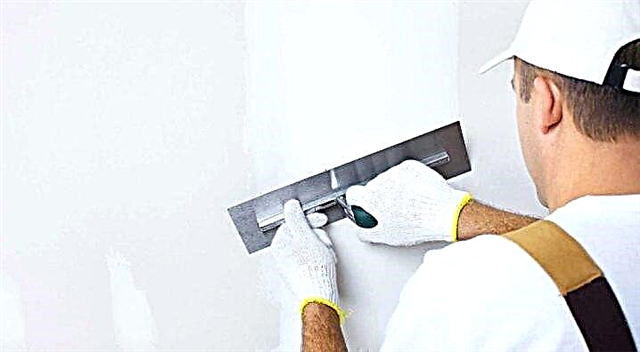
The high quality of the Tex latex mixture was appreciated by both consumers who did not have experience working with putty, as well as masters of finishing construction work.
Among the advantages of the material, the following properties are distinguished:
- low price
- ease of application
- economical consumption
- creates a strong coating
- soft elastic consistency,
- lack of an unpleasant smell.
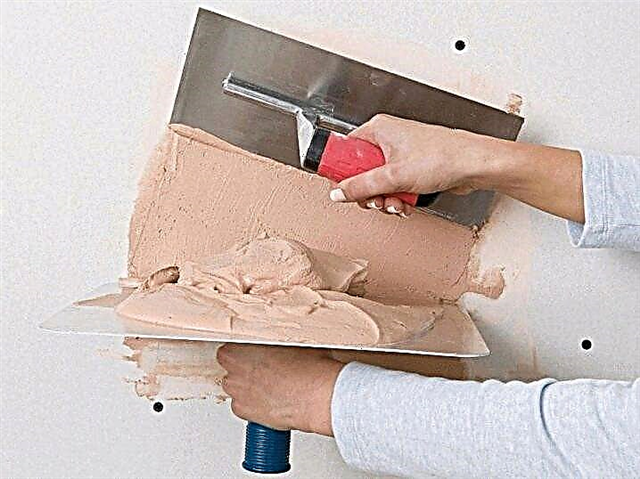
Some buyers note that the mixture is difficult to tint, which is the main disadvantage of the material.
Profilux
The Profilux brand is part of the German concern Meffert AG Farbwerke. Under the brand name "Profilux" high-quality finishing materials are produced.
Latex putty is made under the name "Profilux Profisheet". This material is available in ready-to-use form. Used to level various surfaces indoors. Allows you to get a coating of perfectly white color. After the mixture dries, a durable coating is formed, resistant to moisture and mechanical stress.


Putty "Profilux Profisheet" can be used to create a finish coat. The mixture well covers various defects on the surface, small cracks and seams. The drying time of the solution can be from four to six hours.
Buyers highlight the following advantages of this product:
- the resulting coating is easy to grind,
- smooth smooth surface
- good adhesion
- easy to apply
- dries quickly.

Lacra
The company "Lacra" has established itself in the Russian market of building materials as a manufacturer of high-quality paints and varnishes. All materials produced under this brand comply with international quality standards and are environmentally friendly.
Lacra company’s latex putty is produced under the name “Master’s Choice”. The composition of this material, in addition to the main components, includes antiseptic additives, which makes the coating resistant to the appearance and spread of fungus and mold. The mixture is intended for the interior decoration of walls and ceilings before applying the finish coating.
Buyers note the following advantages of the material:
- low cost,
- lack of smell
- high drying speed
- easy to apply consistency,
- aligns walls well.


The disadvantages of Putty Master’s putty include the uneconomical consumption of the mixture.
"Optimist"
The group of companies "Optimist" is another popular Russian manufacturer of paints and varnishes. The company offers a wide range of high-tech construction products.
Optimist also produces a latex water-dispersion mixture. This material is intended for interior decoration in dry rooms. The mixture is used to eliminate cracks and bumps on the surface before applying the top coat.
As decoration you can use wallpaper, paints and varnishes or other decorative mixtures.

Putty "Optimist" is available in white in a ready-to-use form. The material is characterized by low frost resistance and can withstand five freezing cycles at a temperature of at least -25 degrees. This property allows the mixture to be transported at low temperatures.
Buyers note the following advantages of this composition:
- low consumption per square meter,
- high level of ductility
- health safety
- fire safety
- excellent adhesion
- the resulting coating is easy to grind.

The disadvantages of the solution, first of all, include high cost.
"Hermes"
The Hermes company appeared on the Russian market of finishing materials not so long ago, but has already managed to firmly occupy its niche. Hermes products are of good quality and competitive price. The company produces materials for various finishing and construction works.
Hermes silicone plaster is available as a dry mix. The material can be used in rooms with normal and high humidity before applying the finish coating.
Consumers highlight the following advantages of this mixture:
- low price,
- good moisture resistance of the coating,
- great for painting,
- good wear resistance.
The disadvantages include the form of release of the material: before finishing work, you must prepare the solution from the dry mixture yourself.


How to breed?
Ready-to-apply latex mixtures are more convenient to use, since they do not require additional efforts and time-consuming preparation of the solution. However, dry mixes are cheaper and are no less popular. Powdered putty is diluted in ordinary water in proportions one to one.
No need to prepare the solution immediately from the total amount of plaster in the package. Put a small amount of dry mixture into the putty container. Water is added to the material, while constantly stirring.
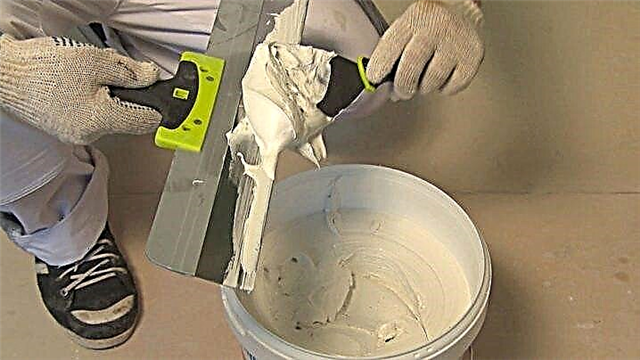
After the mixture is well mixed with water until a uniform consistency is formed, you can proceed to the finishing work. The finished solution can be used within an hour, after which it will harden and become unusable.
Application Tips
Before starting repair work, it is necessary to prepare the treated surface well. All contaminants are removed from the base under the putty, after which the surface must be primed. The primer must dry completely, only after that it will be possible to proceed to puttying the surface.
The latex mixture is not toxic, but some people may have an individual intolerance to any component in the composition. Before starting work, you should take care of your own safety measures.


Skin contact with putty should be avoided, so work best with gloves. When carrying out internal work, the room must be ventilated.
Before applying putty on the surface, the mixture must be kept for some time in the room. It is advisable to bring the solution into the room a few hours before the start of work, so that the temperature of the mixture adapts to room temperature. Then a small amount of putty must be poured into a separate container. Too thick a mixture can be diluted with water. In this case, the bucket with the finished composition must be tightly closed with a lid to prevent the mixture from drying out.
Apply material with a metal spatula. The layer thickness should not exceed three millimeters. Since the mixture has good plasticity, almost anyone can cope with its application, even without experience in carrying out such work.

If you want to make several layers of putty, before applying each subsequent layer, you must wait until the previous one has completely dried.
This time for mixtures of different manufacturers may differ, so you need to look at this information on the packaging. Most often, the coating dries from 2 to 6 hours.
When conducting outdoor work, certain weather conditions are necessary. Do not putty on external walls when it rains or when exposed to direct sunlight. The leveling of the putty surface to give perfect smoothness to the coating is done with a sponge grater.
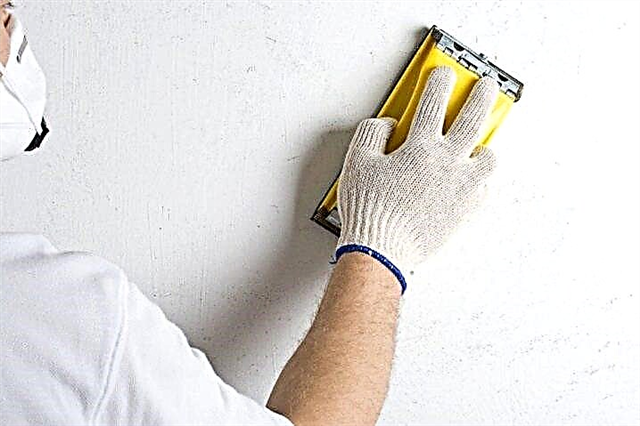
You will learn about the secrets of filling walls with your own hands from the next video.
Surface application
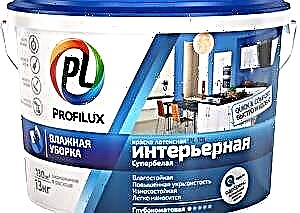 Getting started, you should make sure that the putty has a uniform mass. Otherwise, instead of a smooth and even layer, you can get a surface with scratches, cracks and other imperfections, which will then be very difficult to fix.
Getting started, you should make sure that the putty has a uniform mass. Otherwise, instead of a smooth and even layer, you can get a surface with scratches, cracks and other imperfections, which will then be very difficult to fix.
The prepared mixture is applied to the surface in one or a couple of layers. However, it should be borne in mind that the second layer is applied strictly after the first has completely dried!
Despite the fact that the latex putty is durable and quite durable, using sandpaper is highly discouraged. Since there is a risk of "erasing" the excess. Therefore, for "grinding" it is better to use a normal wet sponge.
After this procedure, you can proceed to painting the surface in a day.
Review of the best brands
It’s quite difficult to choose the right mix right now because the market offers a whole host of putty materials.
Among the popular brands can be identified:
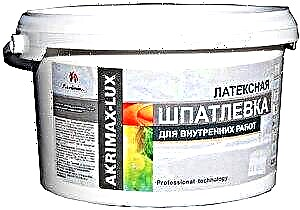 Sheetrock. Good material, evenly lays on the surface, easy to sand. However, when buying it, you should beware of fakes.
Sheetrock. Good material, evenly lays on the surface, easy to sand. However, when buying it, you should beware of fakes.- Vetonit. The putty is soft; polishing is good, however, it is vulnerable to a humid environment. According to its qualities, it takes the middle place.
- Knauf. Work with this putty is much harder. This type is more suitable for masters.
- Caparol. One of the best materials for beginners. Lays evenly on the surface, does not leave cracks.
- Tex. Tex latex putty is another excellent option both for beginners in the construction industry and for professionals. Putty with a thin layer lays on the surface, does not burst, easily peels and dries quickly. This is the best choice according to the formula “price - quality”. When buying, beware of fakes.
Advantages and disadvantages of finishing
Like any other building material, latex putty has positive and negative sides.
Main advantages:
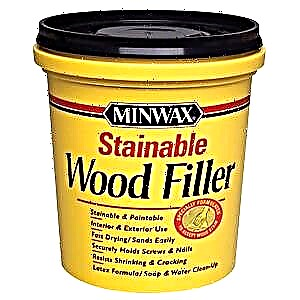 The material has good ductility, thereby allowing even the thinnest layer to be applied to the surface.
The material has good ductility, thereby allowing even the thinnest layer to be applied to the surface.- Most often, this species includes an antiseptic that reliably protects the surface from fungal infections.
- It evenly lies on almost any surface: concrete, brick, previously plastered, particleboard, MDF or gypsum plasterboard.
- When dried on the surface does not leave cracks, bubbles and other imperfections. After drying, the surface is easy to correct grinding.
- A variety of colors allows you to realize even the most unique ideas.
- The application technique is simple and does not require professional skills.
Any, the most remarkable material always has some drawbacks, and latex putty also. These primarily include:
- Price. Compared with other plaster materials, the cost of latex is much higher. However, it is quite possible to compensate for the quality characteristics and ease of application to the surface.
- Storage conditions for this material are limited. For example, plaster may become unusable if stored in a cold place.
But despite all this, one of the first places in the field of finishing materials is precisely latex putty, the use of which allows you to forget about the appearance of cracks and other shortcomings during operation.
Latex putty - description
Before applying the paint coat to the surface, it must be leveled. And here latex putty is indispensable. Concrete, plastered surfaces, gypsum plasterboards and wood-fiber boards - all of these surfaces are carefully aligned with putty.
What is she like? This is a mixture of a binder, filler, plasticizer, antiseptic, hardening regulator and the necessary additives. Latex acts here as a link.
With this composition you will get on the desired surface a sufficiently flexible filler layer that dries evenly after application and is quite durable. Since this material is endowed with minimal shrinkage, cracks and blisters will not occur after application. Moreover, he does not crumble.





Latex putty - advantages and disadvantages


Main advantages:
- Latex is easy to use and quite flexible.
- Even the thinnest layers are applied without problems.
- It adheres well to the surface where it is applied.
- Due to the lack of shrinkage, no cracks appear on the surface.
- When dried, it does not crumble and does not crack.
- Perfect for beginners, as it is already ready for use and convenient to work with.
Disadvantages:
She has only two drawbacks, and you can put up with them.
- Cost. Compared to other species, it is quite high. But you compensate for these costs with the result and speed of work. In addition, if later you plan to paint the surface, then save on the finishing material.
- Low temperatures - it reacts rather poorly to them. If during operation you find that it does not meet the specified properties, it is likely that the putty has frozen in the warehouse. So it’s best to purchase it in those places where you can then return the goods.
And one more thing: when closing the container, make sure that dried particles do not get into it from the lid, since then you may have problems with scratches, and again they will need to be puttyed again.



Latex putty - application


Before starting work, the putty container must be kept at room temperature for some time (if the season is cold, then it is necessary). Previously, the surface on which you will apply it must be treated so that it is dry, clean, there are no residues of the old finish and still be treated with a deep penetration primer.
Now prepare the solution. The procedure for divorcing latex putty is almost identical to the usual. In a container with a putty mixture, we add water and constantly mix until we get a homogeneous paste consistency. Putty and water are taken in equal quantities (1: 1). We give this mass about two minutes to stand and mix again, if necessary, add water.
It is worth considering that the resulting mixture will harden in about an hour, so dilute as much as you have time to spend before it hardens.
But, like any other, the latex mass gives off moisture quickly enough, despite the fact that the surface was primed. If you suddenly encounter such a situation that it’s impossible to do a “stretch” on the surface, although the seams in the drywall themselves have been repaired quite easily, do not worry. You just need to moisten the gypsum with water from the spray bottle a little, and everything immediately normalizes. By the way, it should also be done in the case when the room temperature will be above 30 ° C.
The solution is applied with a spatula in one or more layers. However, keep in mind that we apply each next layer only after the previous one has completely dried.
How much the latex putty dries, the consumption of material, completely depends on the country of manufacture and on the brand, but, as a rule, these parameters are always indicated on the label. On average, time varies from 2 to 6 hours, and consumption - from 0.5 kg / m2. up to 2.5 kg / m2.
Despite the fact that the abrasion is quite resistant to latex putty, the use of mesh or sandpaper is not always helpful. Firstly, you can accidentally "brush off" the excess. And secondly, you will suffer for a very long time with such polishing.
Therefore, the best option would be to smooth it with a damp sponge when it is still not completely dry. Just watch carefully so that excess water does not flow out of the foam rubber.



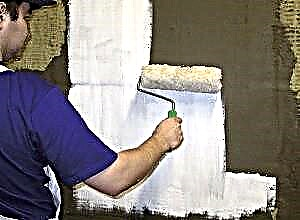

Safety precautions
Despite the fact that latex putty is endowed with excellent environmental indicators, it is not worthwhile to allow prolonged contact with unprotected skin. After all, each organism has an individual reaction to various components, so, in order to avoid an allergic reaction, do not take risks.
It is also very important that during the work in the room there is a constant influx of fresh air. Since the fumes emitted by the putty during drying can cause irritation.

 Sheetrock. Good material, evenly lays on the surface, easy to sand. However, when buying it, you should beware of fakes.
Sheetrock. Good material, evenly lays on the surface, easy to sand. However, when buying it, you should beware of fakes. The material has good ductility, thereby allowing even the thinnest layer to be applied to the surface.
The material has good ductility, thereby allowing even the thinnest layer to be applied to the surface.